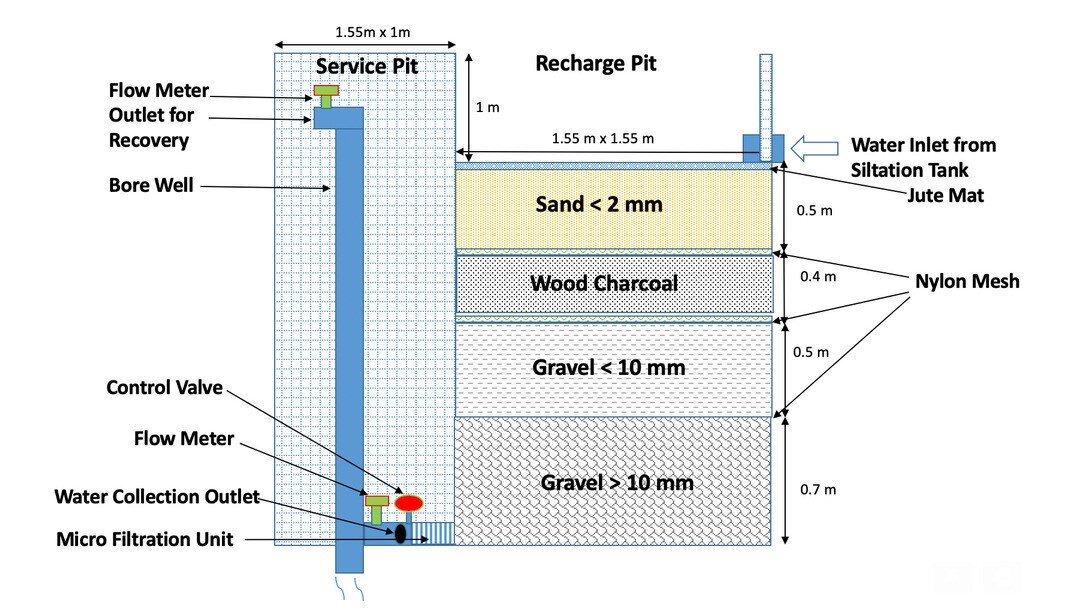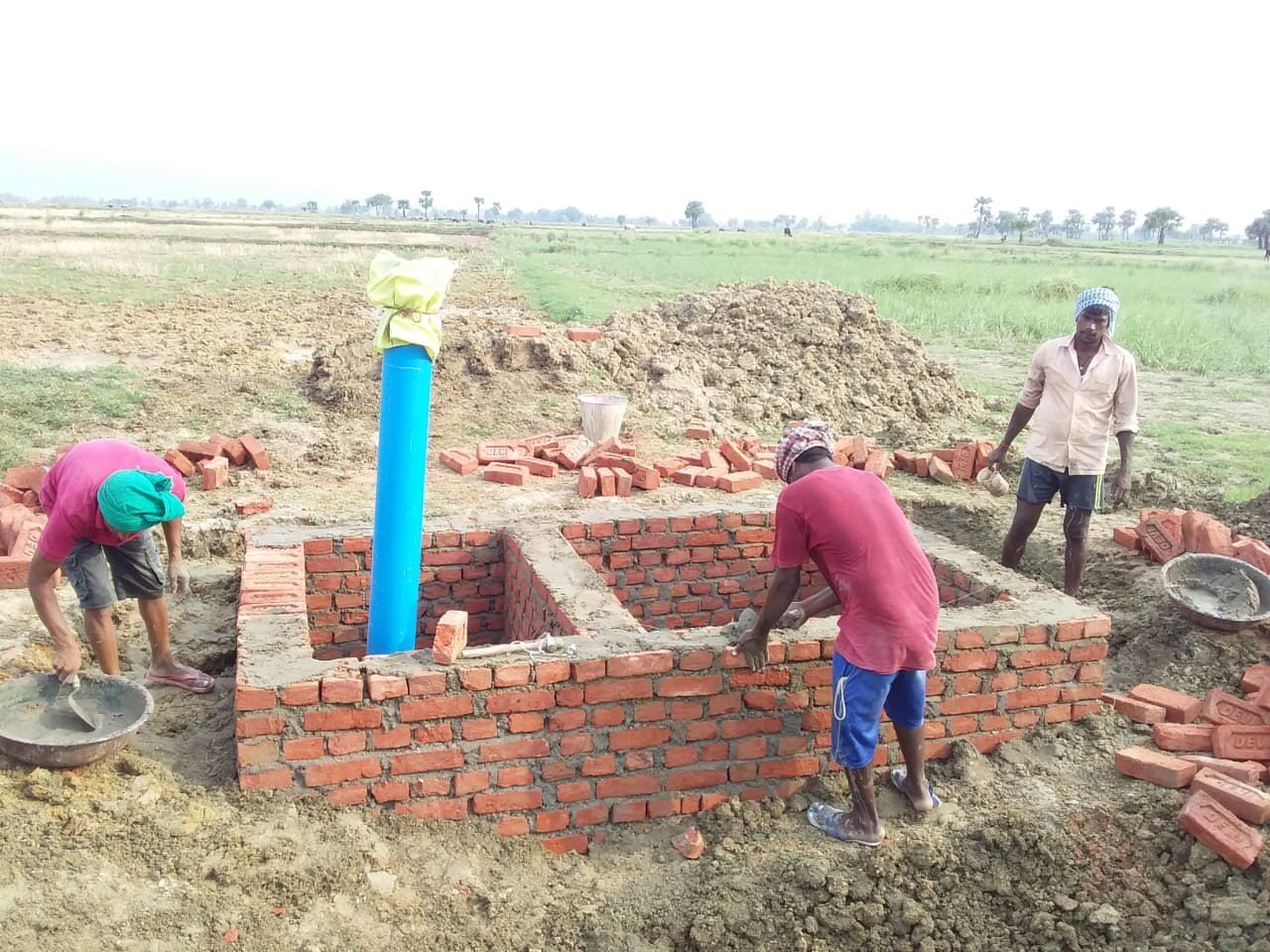Installation of Aquifer Storage and Recovery structures underway in Bihar
Aquifer storage and recovery (ASR) structures are usually constructed on low-lying farmlands to capture rainwater and store it in aquifers. This water is then available for irrigation during the lean season. South Bihar faces alternate floods and droughts and therefore has the potential to benefit immensely from this intervention. The ASR technique is gaining importance as a tool to deal with the impacts of climate change and the need for sustainable intensification of farming.
As part of the ACIAR SDIP program, Nalanda University have been developing an understanding of both the agrarian system as well as the role of ASR technology in water management in the context of the marginal alluvial plains of south Bihar. The programme has focused on Nekpur – a village at the foot of the Rajgir hills with poor groundwater potential, and Meyar – a village about 3 km to the north, with better groundwater potential. Site selection has been an important step, covering both technical and social considerations.
The University is working closely with local contractors to construct the ASR structures. Importantly, the project team has ensured that the farmers on whose lands the ASRA pits are being constructed have also been involved. In one case, the construction was sub-contracted to one of the farmer-partners, which provides us an opportunity to study another method of building entrepreneurial lead farmers at the village level.
Each ASRA structure is a pit that consists of a bore well (of varying depth) and a recharge pit (as per the Figure 1). Four bore wells were dug in Meyar village and three bore wells were dug in Nekpur village. The construction of recharge pits is underway in both villages.

The project team met the farmer partners in Meyar and Nekpur villages to improve the proposed design of the ASRA pits as well as work out ways of participating in the construction work, including monitoring and quality control. Local knowledge to avoid clogging in the siltation tank was duly accommodated into the design of two of the recharge pits. Flexibility in the design of the recharge pits is expected to provide us with some variation to study as well as contribute to greater sense of ownership for our farmer partners.
A real-time monitoring mechanism was developed through a dedicated WhatsApp group of farmer partners (ASRA Mitra) where pictures, videos and comments were shared. In one instance, a farmer partner believed that the size of the gravel was not as per the specifications. The team immediately went to the site, took samples, discussed with the driller, and ensured necessary changes in the procurement of gravel and other hardware components.
Soil samples were collected at regular depth intervals at all the sites in order to conduct grain-size analysis, water retention capacity, and aquifer transmissivity. This is also being supplemented with column experiments in the laboratory. In Nekpur, truck-mounted drilling machines were deployed to cut through the bedrock, which is only about 100 feet below the ground. In Meyar, however, the bedrock was between 210 and 275 feet below the ground, which became the maximum depth of the bore-wells.
COVID-19 considerations
The construction workers came in batches of 4-5 per drilling site from nearby places like Islampur, Biharsharif and Nalanda. They were generally small farmers and farm labourers, often members of the same family, working in the construction sector in nearby areas. They stayed at the work-site and preferred to work at night in order to beat the scorching summer heat. They have also had to deal with spells of pre-monsoon showers by reorganizing material storage and construction.
Issues related to COVID-19 were discussed with the farmers before the construction work started. Our field activities were in rural areas in the farmlands, where social distancing could easily be achieved. Family cohorts of workers and night-time activities further helped in reducing risks of any possible transmission of the virus.
For more information, please contact Dr Somnath Bandyopadhyay ([email protected]).
